Finding our Musical Roosts

It was moving weekend for lots of birds here, packing up their homes to move to greener pastures on, well, green pastures! But first we had to complete all those homes, and that made for about 30 hours of work on a very hot weekend. So, this post is late and we're tired.
The physical work and management of your energy is one thing, but I think the biggest challenge is teamwork. I realize it's unusual, but Louisette (my wife) and I don't respond identically to stress! We like to say we have "complementary" response profiles, which is a fancy way of saying, "We tried not to kill each other while getting to the finish line." We survived :-).
We've had up to 50 chickens before, but now there's over 200 birds in five separate groups. We needed to get the young ones out of the brooders (and my shop!) and onto some grass. We have:
- Our long-term layer flock of 16 hens (all at least a year old) have a huge coop in the barn and a massive outdoor run area. They're completely oblivious to all of this.
- Our six beltsville small white turkeys from Gillian Jenkinson's farm (you can recognize Gillian by her Monty Python-inspired handle, Killer Bunny, on Poultry Talk Ontario) are almost three months old now. They remain in our "Penhouse" that doubles as a garden shed over winter.
- The 99 white chantecler chicks we received from Heather of D&H Farm (read about that trippy trip in Adventure Farming) have occupied one of three brooders in the shop, made using our half-built chicken tractors. They're a bit older than a month now.
- Also from D&H, another dozen beltsville small white turkeys have occupied a second brooder in the shop, and are also a little more than a month old.
- Finally, the 99 cornish cross meat chickens - hatched on June 1, so almost a month old, have been peeping up the third brooder.
As described in Building a new tractor, we built three chicken tractors loosely following John Suscovich's design, making modifications as necessary to make use of materials we had on hand. They're sturdy and easily slid along the grass to fresh pasture every day. Until now, they were brooder pens, completed far enough to provide a perimeter and supports for hanging feed, water, and heat lamps.
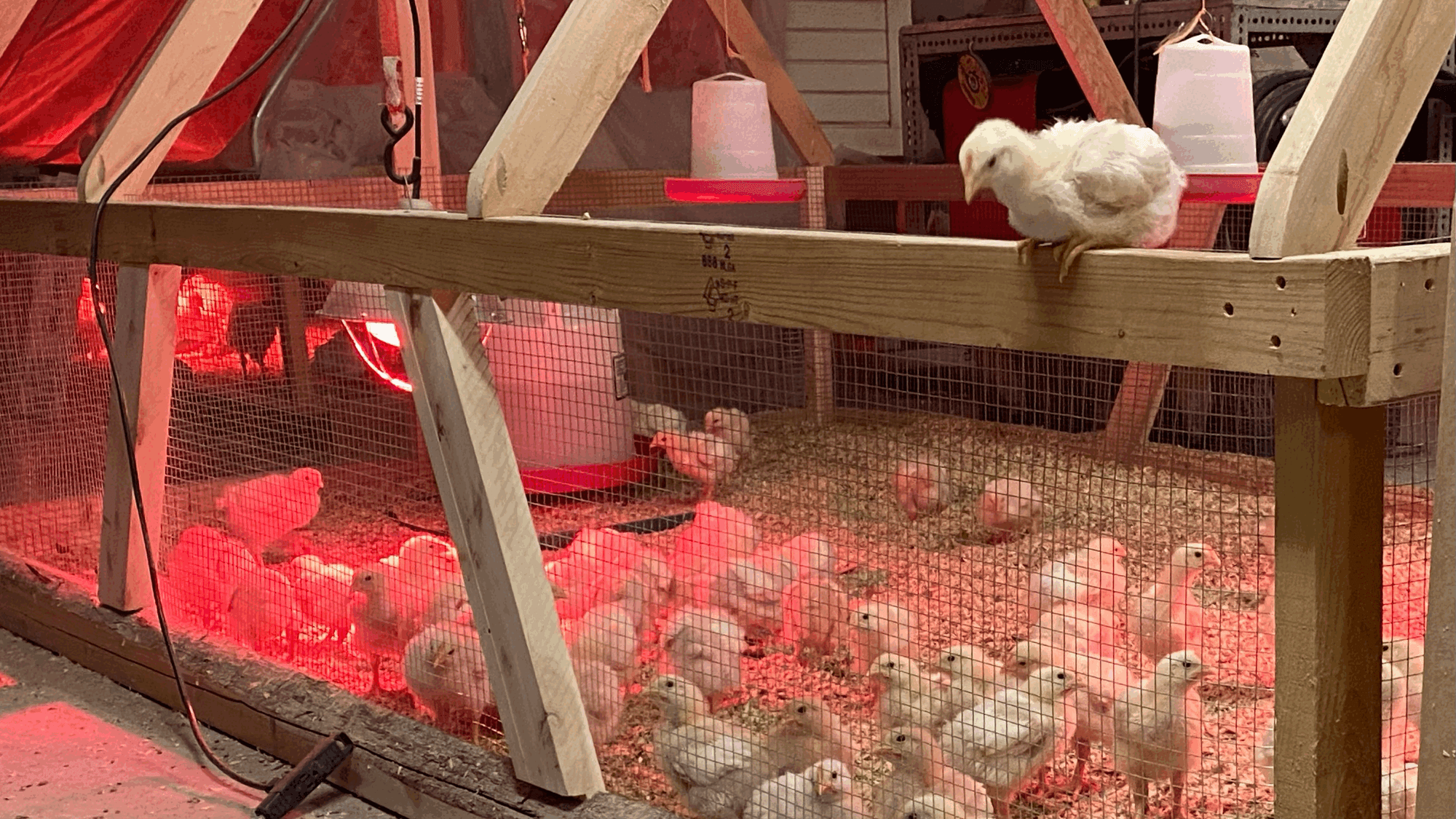
Now, we need the tractors completed, on pasture, and (hopefully) able to defend against coyotes, foxes, and racoons. All of these predators will surely test them. Friends lost two hens this weekend to multiple foxes - likely a vixen with a few kits - in the middle of the day, while the chickens free ranged (they actually noticed the comotion when they saw a chicken flying clear over their two-storey house). The coyotes are also bold here. The racoons are relentless and the foxes are, well, foxy.
The 99 white chantecler move out
It's tricky to have three chicken tractors in use for brooding when you need to finish them to get them outside! Fortunately, we now have the camper coop, so we put the Chantecler youngsters in it and got to work on the tractor they were brooding in.
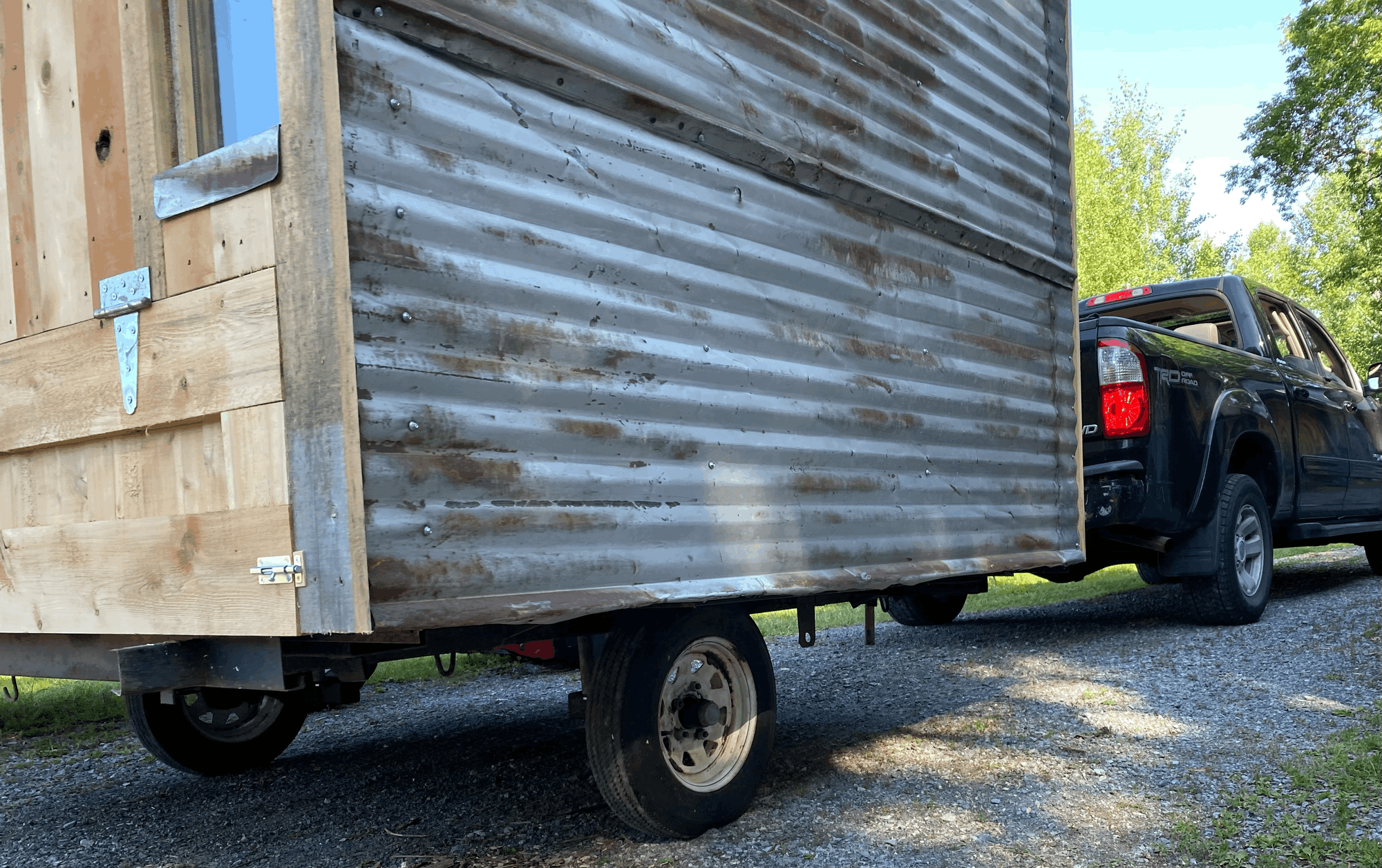
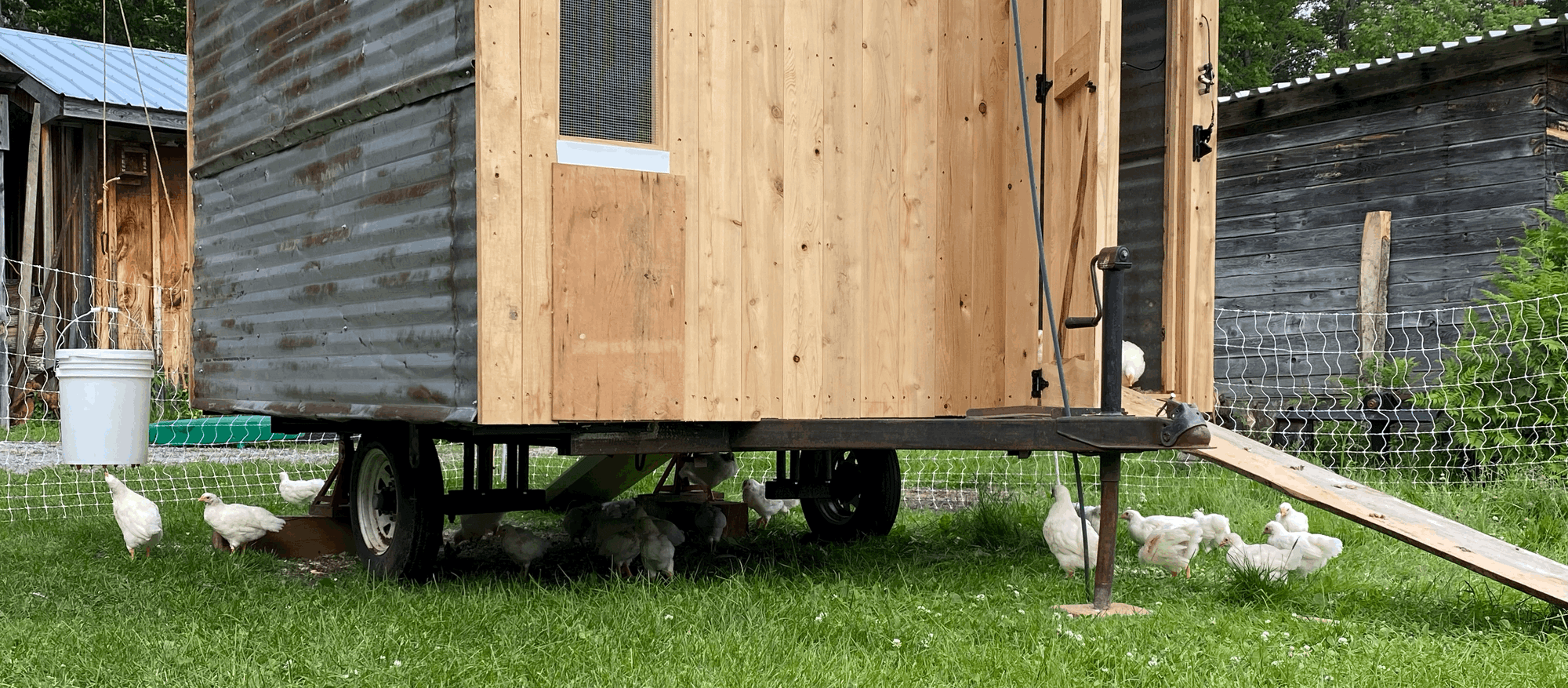
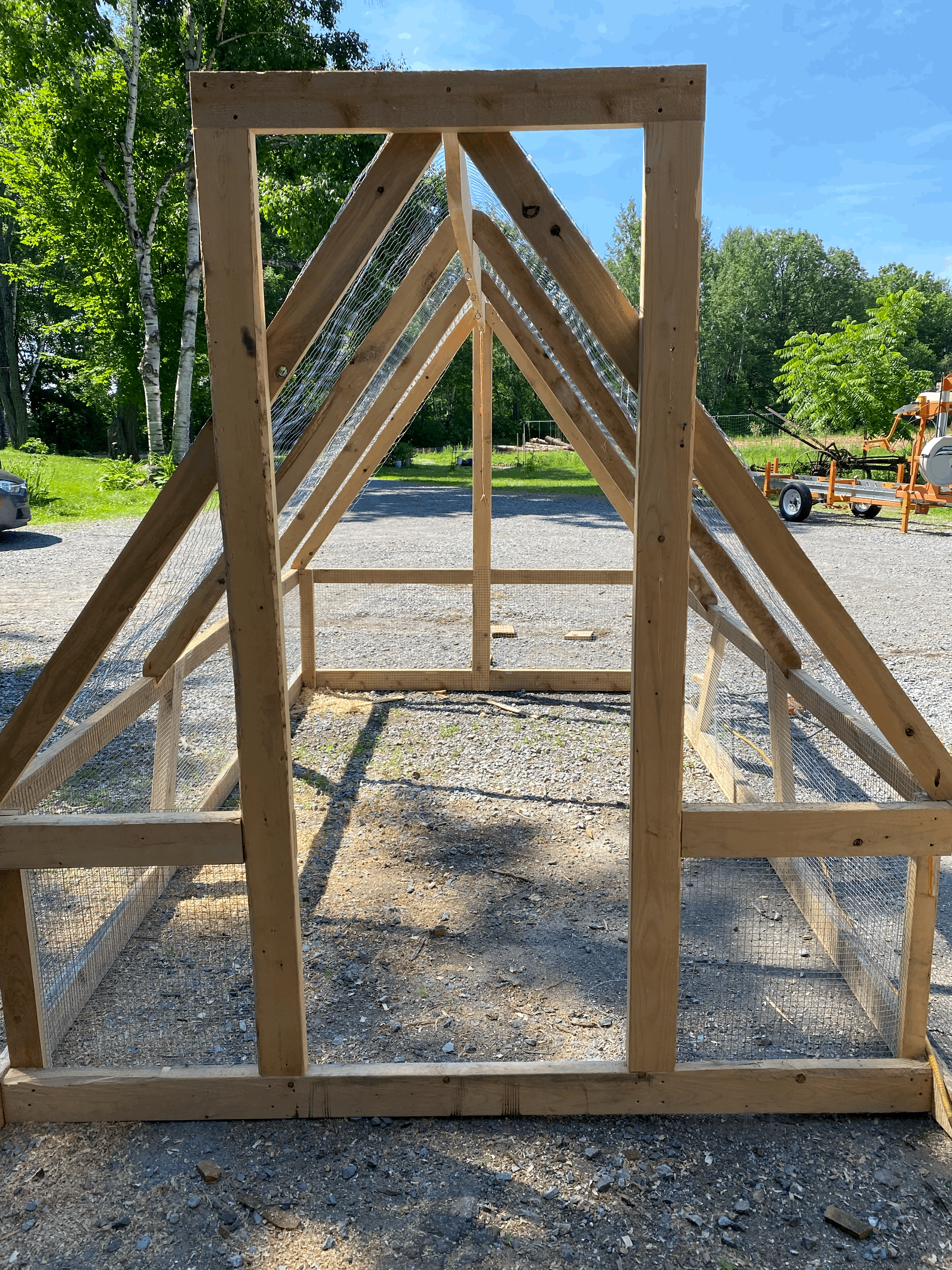
The 99 cornish meat chickens move out
After some work in the heat and humidity stapling chicken wire to the tractor frame, completing a few chicken tractor doors and anchoring the tarps over them, the cornish meat birds were happy to hit the grass and we were happy to have them pooping outside!
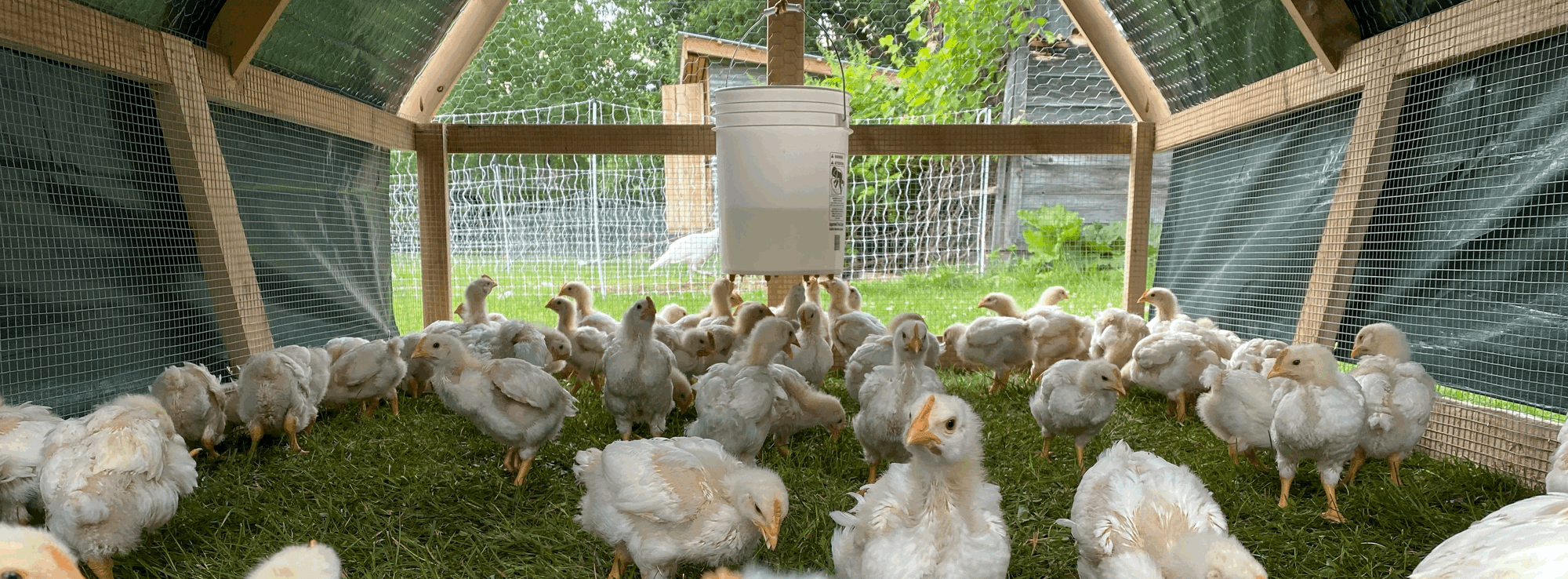
The dozen beltsvilles move out
With the cornish out of their brooder, we got to work on the tractor frame they'd been using and completed our second one. It was late in the day but the second time around it went much faster.
These turkeys grow quickly! Here they are when they first arrived and today. They seemed confused but curious moving out to pasture and didn't take long to find the clover in the grasses, which seems to be a favourite.
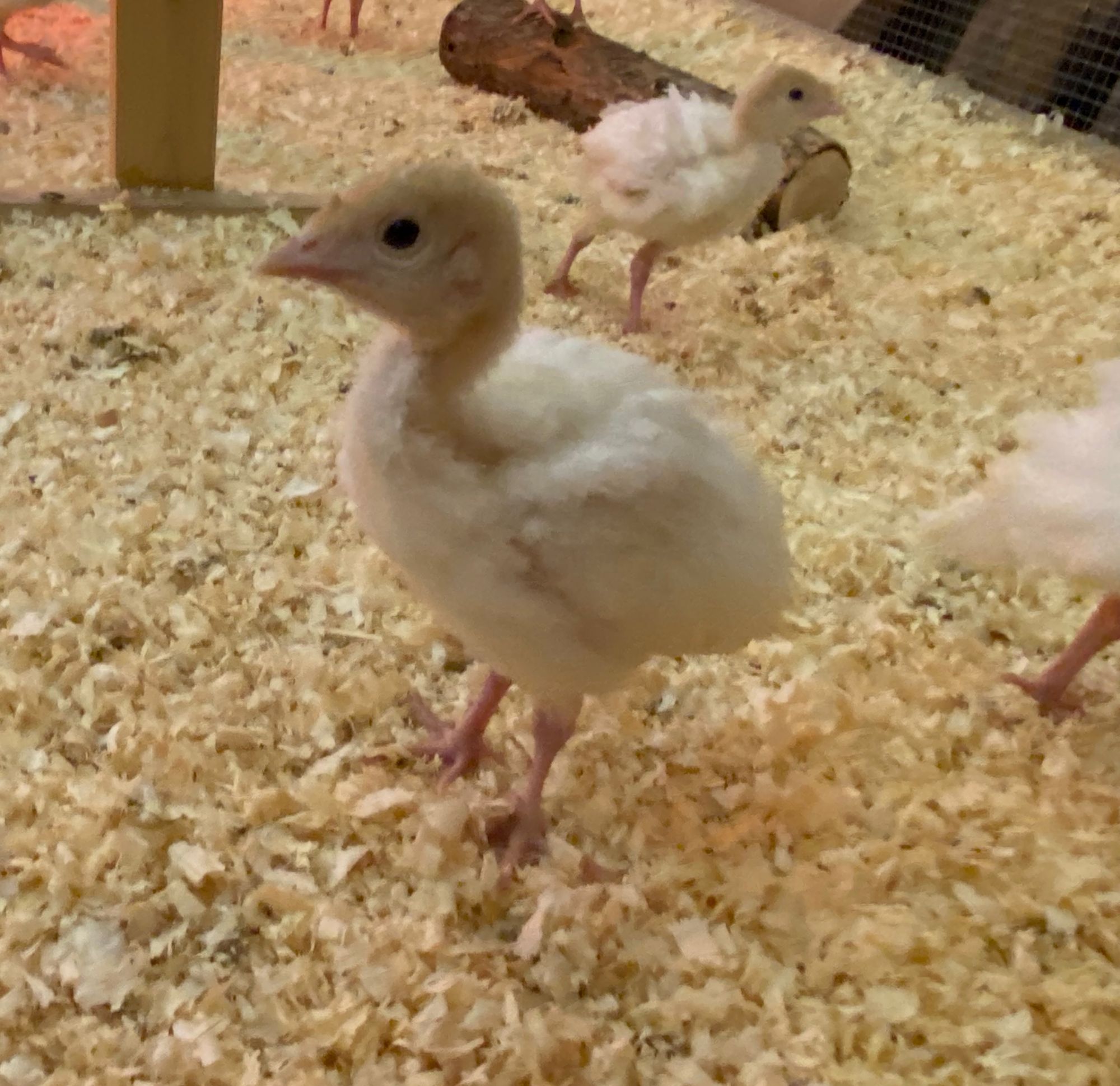
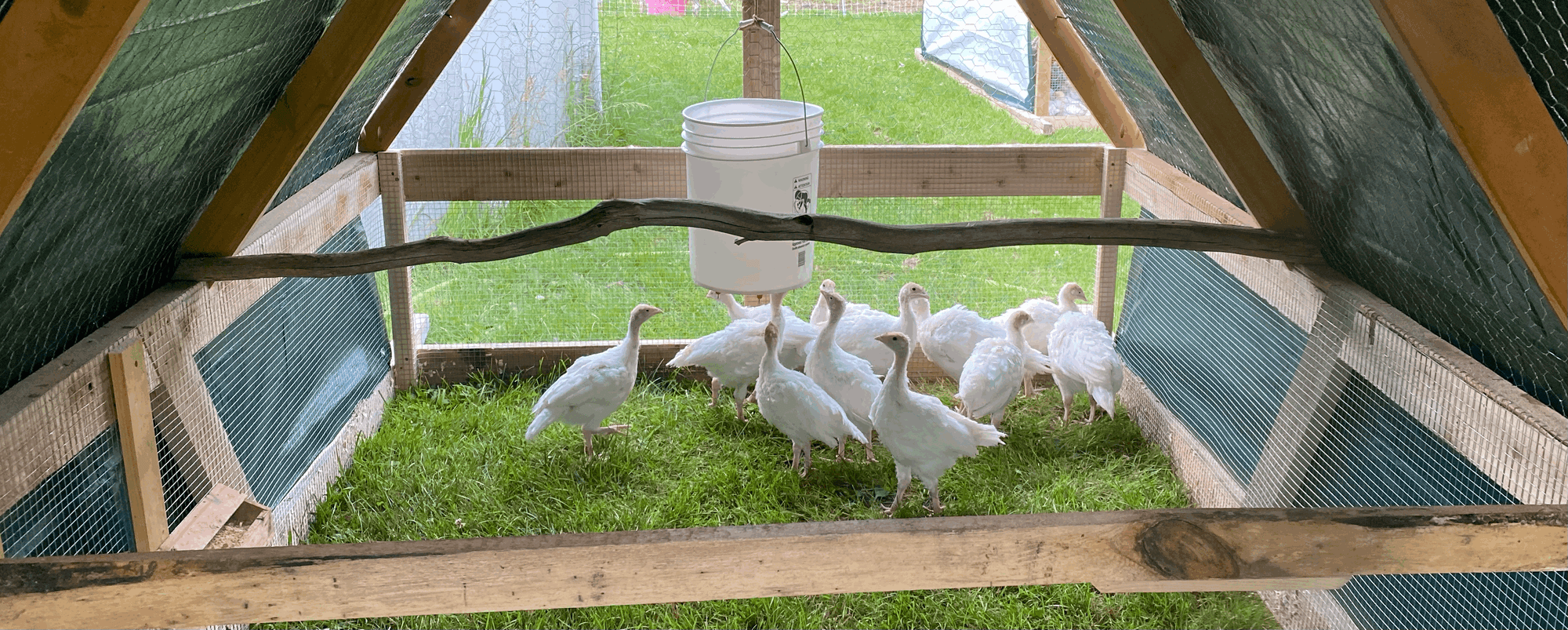
So what's left?
One tractor remains to be completed, which we'll use to split the cornish meat chickens into two groups. Except...
Gap in the plan
We will soon need all three tractors for the meat chickens because they grow fast, leaving the dozen turkeys homeless. At that time, they'll still be about 6 weeks too young to introduce them to the older turkeys.
I'll think of something.
Update on our first group of turkeys
The six beltsville small white turkeys that we introduced in Talking Turkey as noted above (four hens and two toms), look fantastic. Curiously, one of the toms is well behind in developing his masculin features - though they're there - and he isn't posturing much, leaving the showmanship to the other tom. He seems healthy, and that's what matters!
These turkeys have been enjoying the Penhouse. We call it the Penhouse because it has a sign on the outside that says that.
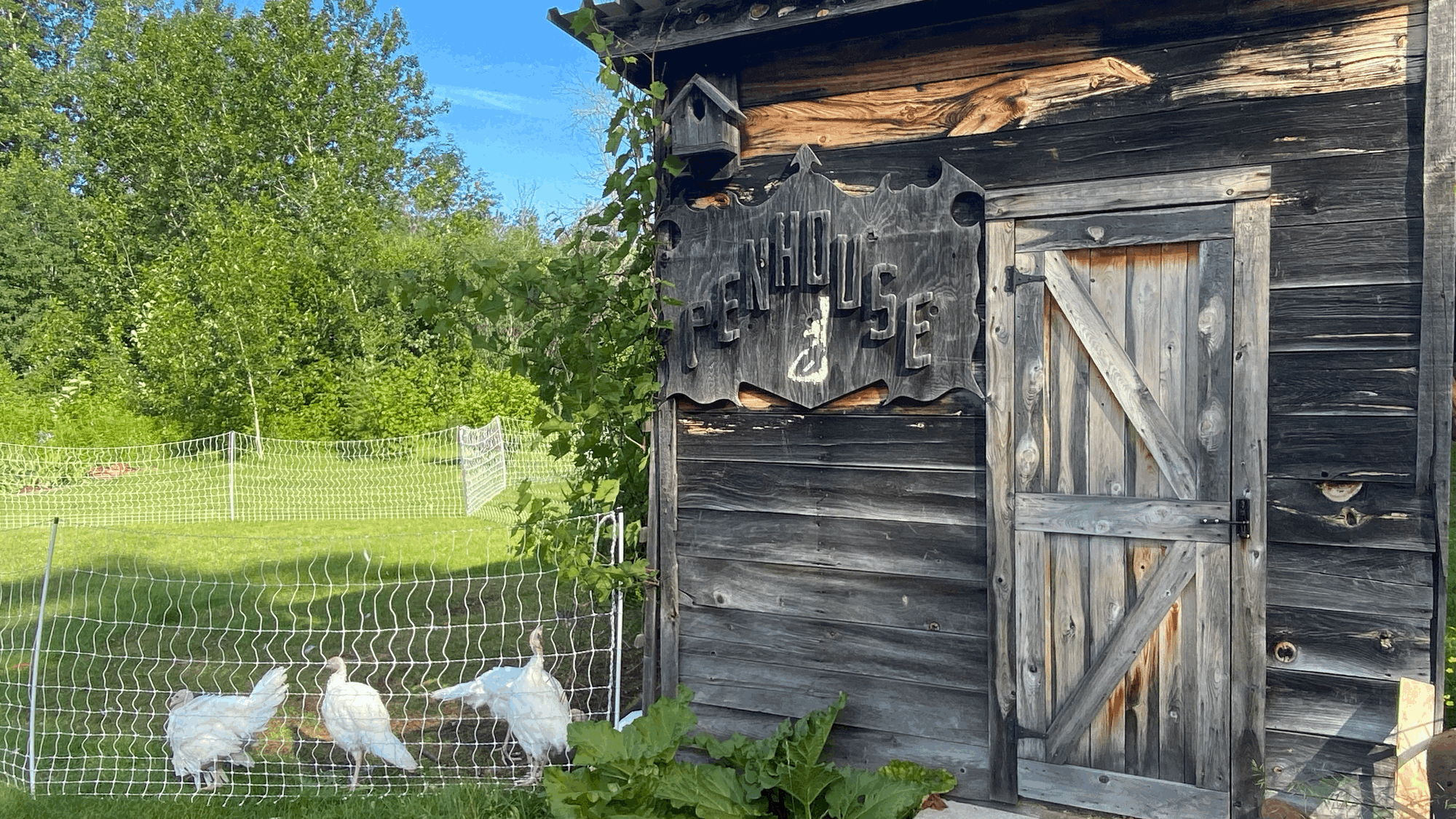
With the addition of a poultry net fence that can be energized for predator exclusion, the bigger turkeys have a large foraging area to enjoy.
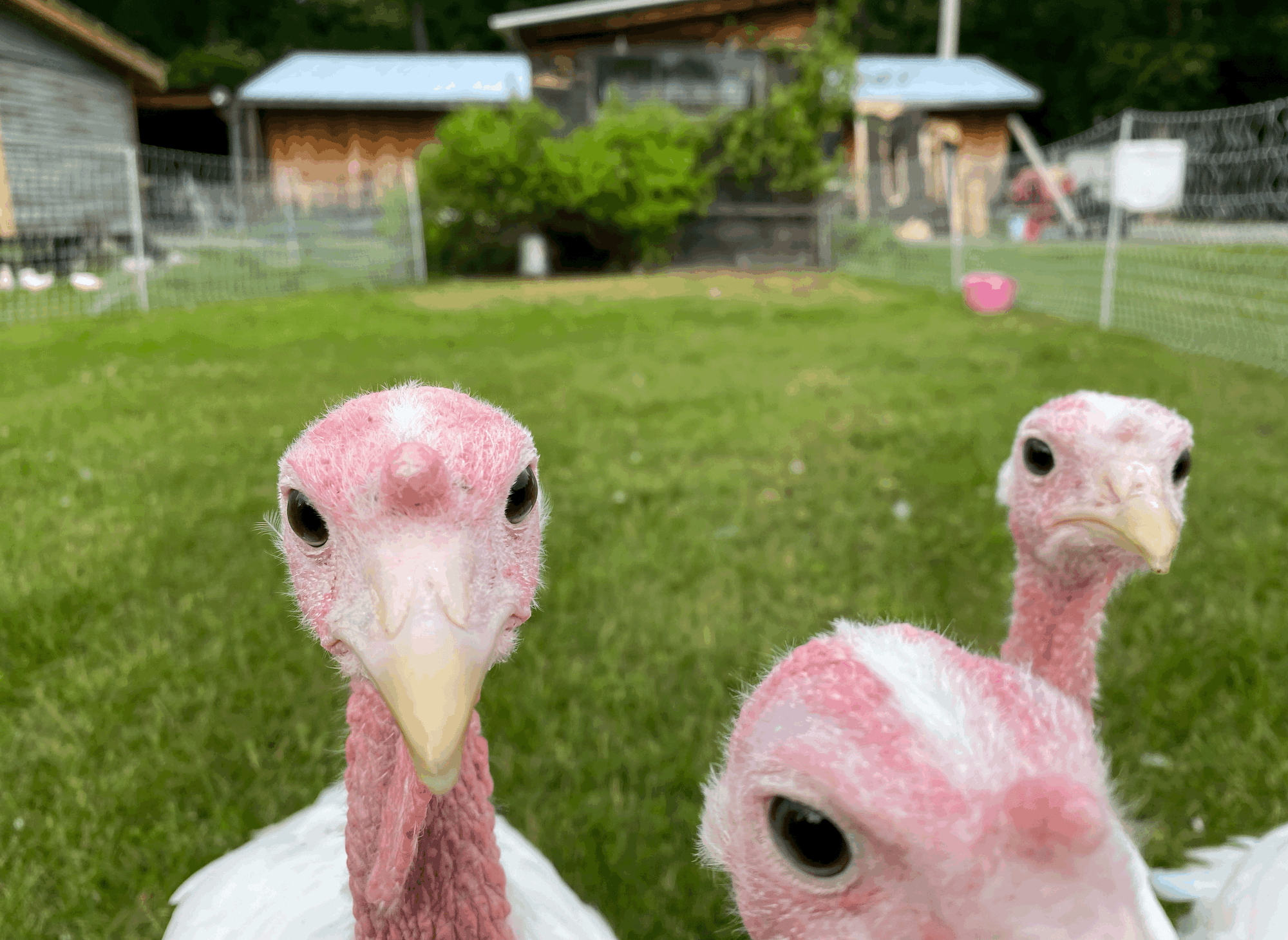
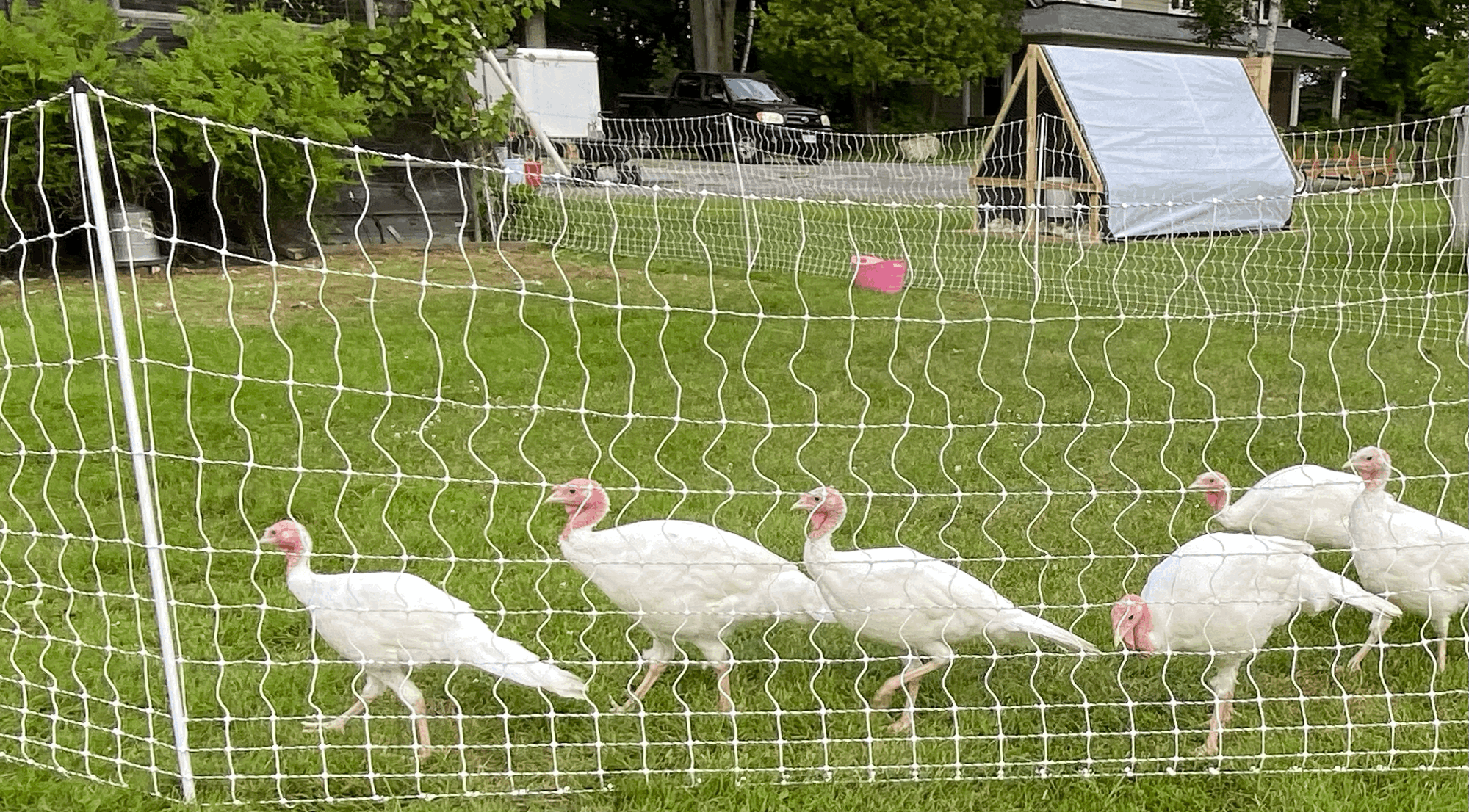
You're up to date!
Thanks for reading. Send me an email anytime. You can peruse other musings of this wannabe farmer from the homepage, or click on my picture, below.